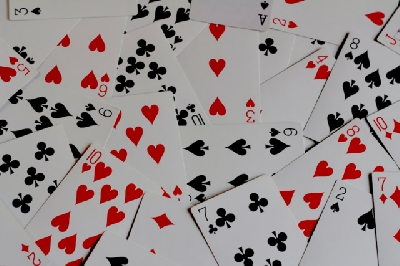This post was published by a guest. The views expressed are those of the author and do not necessarily reflect the views of Scified.com.
Poker night. It’s where legends are born, and if you’re on the losing end, egos are bruised. It’s where beloved stories of outrageous bluffs and improbable wins are forged. Not to mention lifelong friendships! If you’ve ever wanted to join the action but didn’t know your flop from your full house, it might feel a little intimidating. Actually though, Texas Hold'em is the perfect place to start! This poker variant isn’t just the most popular, it’s also surprisingly easy to pick up. Sure, once you’ve learned you’ll find out all kinds of hidden complexities, but on the surface? You can bluff your way through a Texas Hold’em game no problem!
The Basics: Deal, Bet, Win
Let’s start at the start! Each player is dealt two private cards, called hole cards. You can think of these like your secret weapons, so keep them close. Literally! You don’t want anyone to see them. Over the course of the hand, five community cards are dealt face up in stages: the flop (three cards), the turn (one card), and the river (another card).
Your mission, should you choose to accept it, is to make the best five-card hand possible using any combination of your two hole cards and the five community cards. Once all betting rounds are complete, the best hand wins. But, what is the best hand?
Hand Rankings

Before you even think about bluffing your way through a game, you need to master hand rankings. There’s no cheat for this, you’ve got to learn them — or find a bunch of players who are happy with you having a cheat sheet — which let’s face it, probably isn’t going to help with this bluff!
Hand rankings are poker’s language, and if you don’t speak it fluently, you’ll find yourself folding with flushes or calling with pairs when you should have backed off.
Let’s start with the essentials. A royal flush is the holy grail - ace, king, queen, jack, ten, all of the same suit. At the other end of the spectrum is a high card, which is basically poker saying this rubbish card, this is the best you’ve got.
There are endless tips for beginners but there really is no substitute for knowing your hand rankings. Video poker can be a fun tool for this, as in this game, the whole focus is on knowing your rankings inside out. This takes the pressure off in all other areas, allowing you to hone in on one task at a time.
Onto the Betting Rounds
It’s the bit we’ve all been waiting for, the betting rounds! Here’s a quick step by step of how this bit plays out:
1) Pre-flop: Players bet after seeing their hole cards.
2) The flop: The first three community cards are revealed.
3) The turn: A fourth community card joins the party.
4) The river: The final community card is dealt, and the last round of betting occurs.
Each round presents an opportunity to fold, call, raise, or check (depending on the action). And while folding feels like defeat when you’re new, it’s worth remembering that the best poker players spend a lot of time throwing their hands away. In fact, it’s often wise to! There’s a popular saying on the poker circuit - ‘You don’t win money by playing hands. You win it by playing the right hands.’
Time For Bluffing
As your poker prowess is so far one big bluff, you might be fooled into thinking that you’re already a natural. Don’t be! Bluffing is what makes Texas Hold'em a game of psychology as much as strategy. A well-timed bluff can win you the pot without even showing your cards, but it’s not just about staring down your opponents and hoping they fold. There’s a lot more to it.
Good bluffing requires credibility. If you’ve been playing conservatively and suddenly go all in, your opponents might smell a rat. On the flip side, if you’re constantly throwing chips around your bluffs will get spotted.
Bluffing isn’t about tricking your opponents into folding every time. It’s about creating a narrative and a believable one! If the community cards suggest you could have a straight, act like you do. If your betting pattern tells a consistent story, even seasoned players might fold against you.

How Poor Timing Can Ruin Even the Best Forex Trading Strategies
Forex trading depends on timing. Even the strongest strategy can fail when trades occur at the wrong hour. Each session moves with its own rhythm. The...

Loans for Delinquent Borrowers: Yes, You Still Have Options
Financial setbacks can derail even the most responsible individuals. Missed payments, fluctuating income, unexpected emergencies, or accumulated debt ...

Overseas Gift Lending Account: A Smart Choice for Cross-Border Support
In an era defined by globalization and digital connectivity, the concept of an Overseas Gift Lending Account has emerged as a vital financial tool for...

Top Player Poker Money Prize: The Ultimate Guide to Record-Breaking Winnings
In the world of high-stakes gaming, top player poker money prizes represent far more than just impressive dollar amounts—they symbolize mastery,...

5 Best Pennsylvania Casino Apps for Real Money in 2025
Mobile gaming has completely transformed downtime. Pennsylvania casino apps let you play slots, hit the blackjack tables, or spin roulette w...


